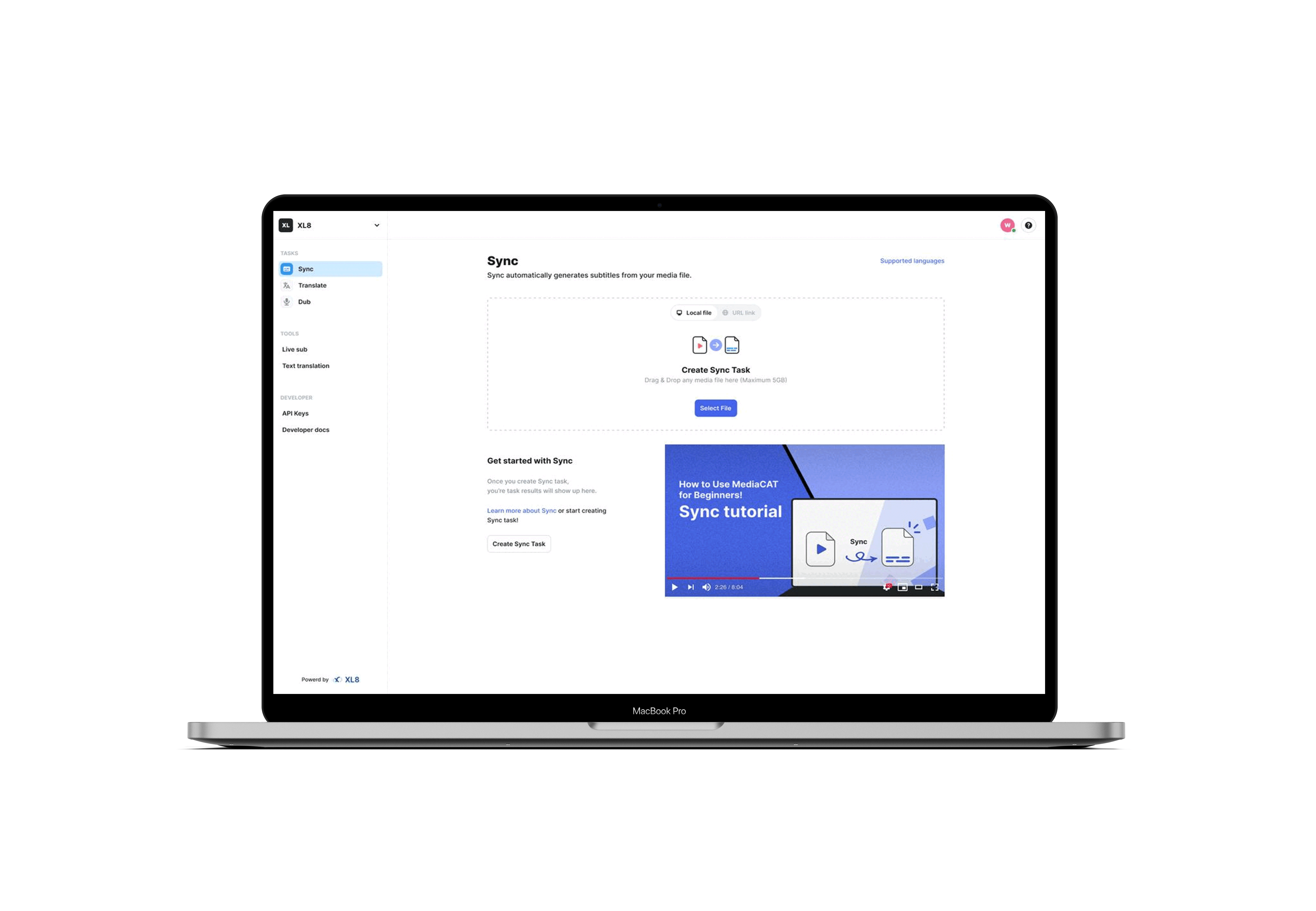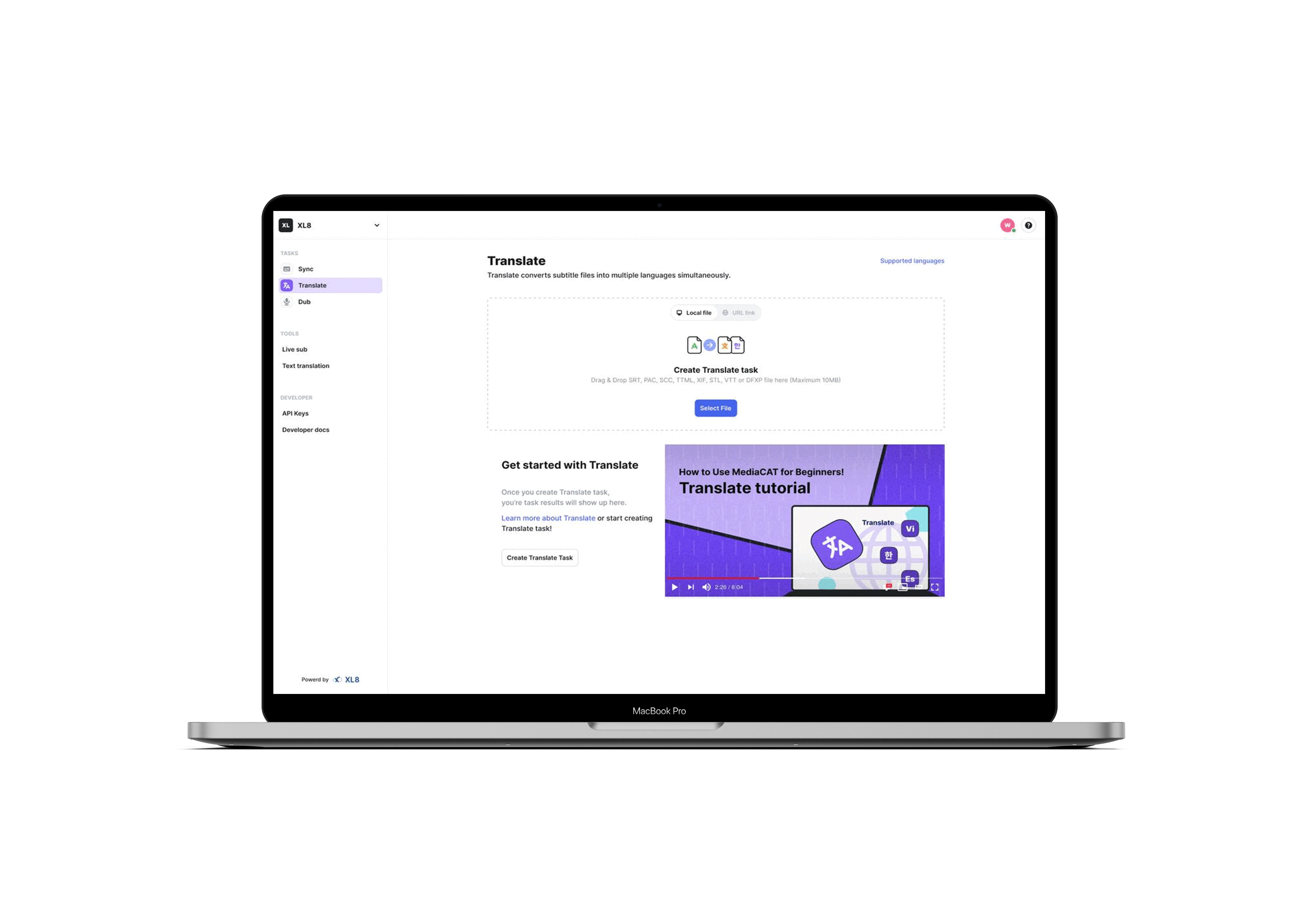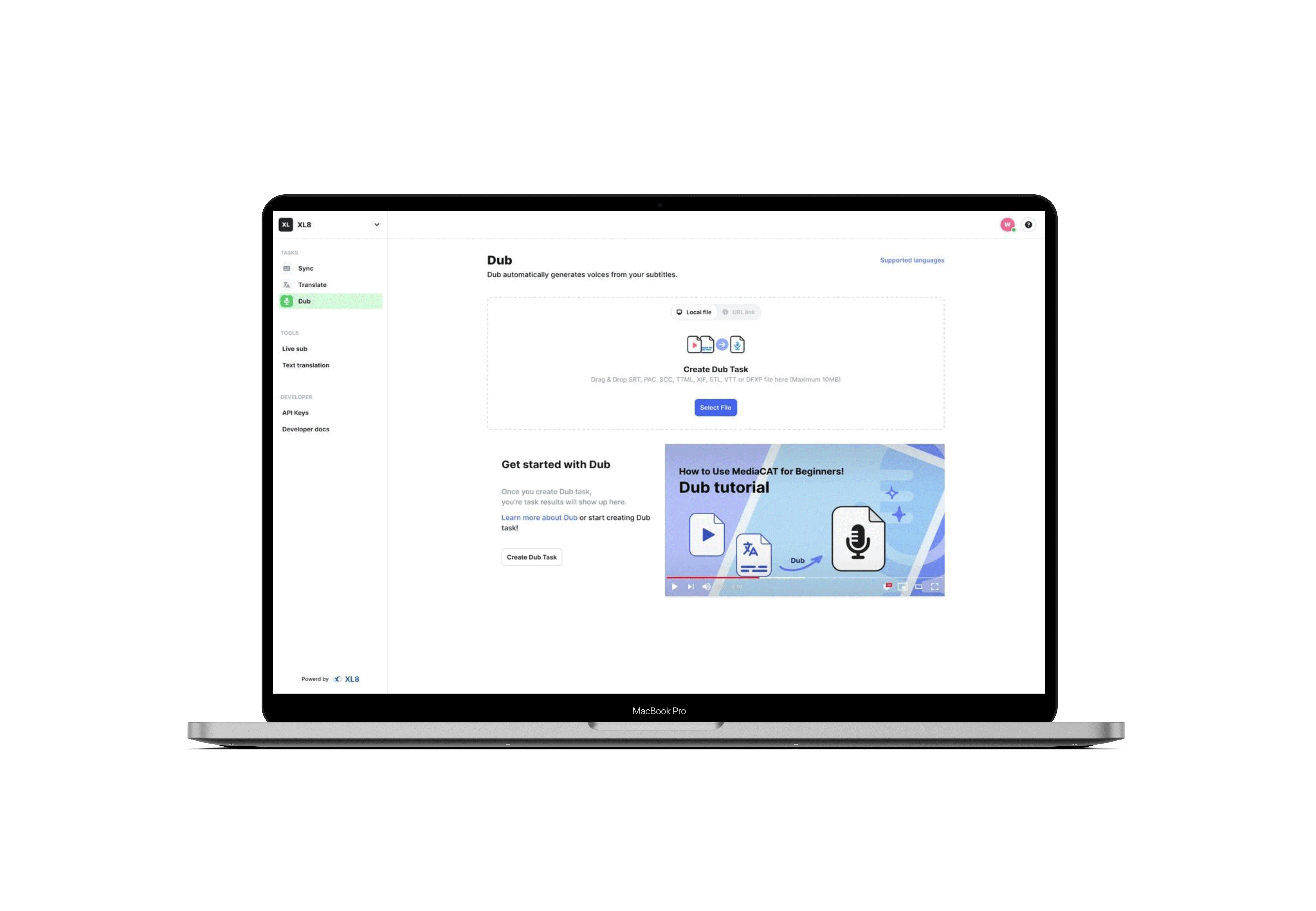MediaCAT
MediaCAT is an AI-powered translation tool, which generate subtitles and translate into different languages for large-scale streaming content providers.
Outcome
MediaCAT is integrated into OOONA’s and VoiceQ’s localization platforms and supports existing workflow and arranged a partnership with Iyuno-SDI, sriptix, and more.
Outcome
MediaCAT is integrated into OOONA’s and VoiceQ’s localization platforms and supports existing workflow and arranged a partnership with Iyuno-SDI, sriptix, and more.
Overview
Duration
Launced Beta on May 2022
Public release on August 2022
Team
Product manager
4 Engineers
2 Product designers
My role
User Research
Market Research
User testing
Wireframing
Prototyping
Visual Design
Company
XL8.ai
TL;DR
MediaCAT is an AI-powered translation tool, which generate subtitles and translate into different languages for large-scale streaming content providers.
Our user is LSP [language service providers], who edit, correct the subtitles and translation. Their problem was redundant workflow and unfriendly tools makes their work inefficient. We did our research and set our goal of ‘Create a tool with seamless workflow and Intuitive interface’ to solve users problem. We designed, tested, iterate, tested, launched Beta, tested, and itertate to Public release.
We got the result of user satisfied with the MediaCAT, and the Number of major clicks and page transactions decreased (5 to 3), shorten the workflow. User retention, Success rate of task creation increased. MediaCAT is integrated into other platforms(OOONA and VoiceQ), and arranged partnership with other companies.(Iyuno-SDI, sriptix)
Our user is LSP [language service providers], who edit, correct the subtitles and translation. Their problem was redundant workflow and unfriendly tools makes their work inefficient. We did our research and set our goal of ‘Create a tool with seamless workflow and Intuitive interface’ to solve users problem. We designed, tested, iterate, tested, launched Beta, tested, and itertate to Public release.
We got the result of user satisfied with the MediaCAT, and the Number of major clicks and page transactions decreased (5 to 3), shorten the workflow. User retention, Success rate of task creation increased. MediaCAT is integrated into other platforms(OOONA and VoiceQ), and arranged partnership with other companies.(Iyuno-SDI, sriptix)
Background.
Media content in market is produced every day and streamed all over the world. However, there are lots of low quality subtitles for the media contents. As the number and time of people creating the subtitles are limited, it is time consuming and expensive to create high quality subtitles. Also people who generate those subtitles in multiple languages [LSP; Language Service Provider] need right tool to create high quality translations.
To ‘Help our user create high quality subtitle in multiple languages easily, and efficiently’,
we started our journey of building ‘Intuitive, easy to use product based on our high quality translation engine’
Our user.
As a first step, we started from deep diving in to our target/potential users.
Our users are Language Service Provider who generates subtitles and translates it into multiple languages for OTT, and the primary goal of our user is to generate high quality subtitles in multiple languages in short period of time.
Main job to be done of our user:
1. Correcting /Editing inaccurate translation in subtitles.
2. Restructuring the sentence depend on each languages.
3. Editing sync/captions/subtitle by comparing it with the video.
And we were also able to learn about their pain points of their day to day work.
Problem of our users.
After meeting users, we discovered some pain points that users are facing in their day to day work, and found design opportunities to solve users problem.
Problem
1. Redundant action is required in current flow
User had to upload source files every time when they are creating tasks, Can’t do multiple tasks at once.
2. Hard to use, Complicated tool
Their current tool is too complicated, and hard to use.
1. Redundant action is required in current flow
User had to upload source files every time when they are creating tasks, Can’t do multiple tasks at once.
2. Hard to use, Complicated tool
Their current tool is too complicated, and hard to use.
Design opportunity
1. Create efficient workflow by reducing redundant work, and help user to do multiple task in single flow
2. Create simple and easy-to-use interface
1. Create efficient workflow by reducing redundant work, and help user to do multiple task in single flow
2. Create simple and easy-to-use interface
Solution and Design goal
Hypothesis
We can help user to complete their job faster, by reducing redundant work, and allow multiple tasks in a single flow.
1. Create ‘Seamless workflow’
01 Reduce redundant process
Add ‘revise’ feature and allow users to create another task with previous task results, by reducing the redundant process of ‘uploading’ same source file.
02 Add ‘Proceed’ feature
Add a ‘Proceed’ feature, and allow user to run different tasks (Sync, Translate, and Dub tasks) in a single flow.
Before
- User had to upload same source file over and over, to create another task or just to change the settings, and file format
- User need to download and upload the completed result file if they want to use it as a source fils for different tasks
After
- New flow allows user to create multiple runs in each tasks and user don’t have to upload source file in every task creation
- User can Sync, Translate, and Dub in single workflow
2. Design simple and intuitive interface
01 Create simple, clean interface
Create simple, clean interface with visual hierarchy, and refined visual elements.
02 Intuitive, Easy to use
Clear distribution in each steps of work, and provide guide to users (Help text, Youtube tutorial, learn more links) in order to help our user complete their work easily and fast.



Beta to public release
We conduct user interview and testing after Beta, and users were mostly staisfied with the ‘Seamless workflow’ as it made their workflow efficient, and we also found some insignts in developing the design of MediaCAT.The Interface
From the explorations and analyzing user feedback after beta launch, we worked on revamping the interface of MediaCAT.
Design focus
Organized detail, interface
: Focusing in organizing the details and information with visual hierarchy in interface
Easy to use, user friendly
: Guide panel (add visibility in help text), Provide additional detail for user. (Youtube tutorial video)
Refined visual elements
: Applying design system in updating details of visual elements.
︎︎︎ Some parts of design system used in MediaCAT
Outcome
MediaCAT is integrated into memoQ, OOONA’s and VoiceQ’s localization platforms and supports existing workflow. We also arranged a partnership with Iyuno-SDI, sriptix, and more.
From the User
Our customers are more satisfied with the new version of MediaCAT as they can complete their job faster
From the User
Our customers are more satisfied with the new version of MediaCAT as they can complete their job faster
The success rate of user completing the tasks increased. (80% to 87%)
7 ︎ 6 Min
![]()
Time it take for single task creation decreased from
7 to 6 minutes.
The number of users fully understanding the details of each Metadata increased significantly. (30% to 75%)
7 to 6 minutes.
The number of users fully understanding the details of each Metadata increased significantly. (30% to 75%)
